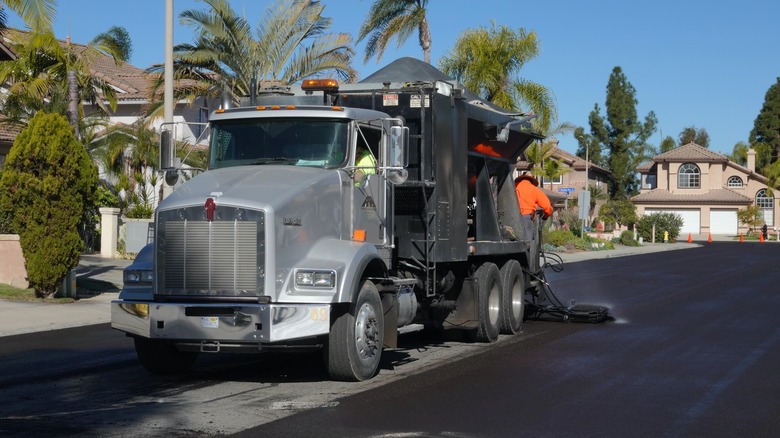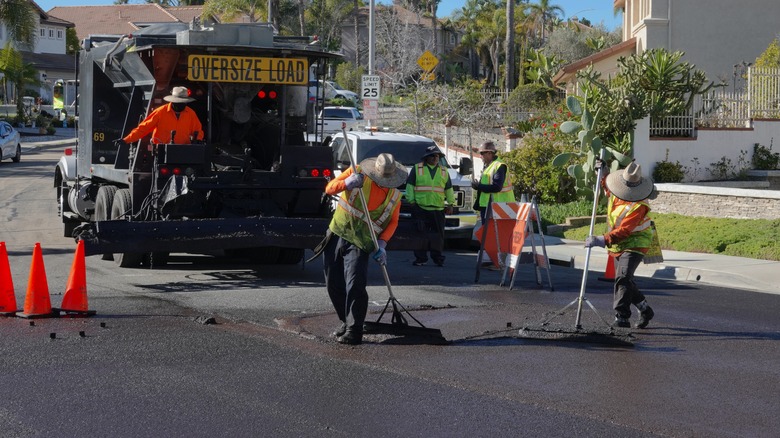Why Are Roads Coated In Oil & How Much Does This Cost?
Few things can prove more frustrating when you're out and about than traversing a damaged roadway rife with cracks, crevices, and potholes that require seeing a mechanic. Especially if the street remains in tattered shape for lengthy periods of time. It has, of course, been difficult to maintain roadways since they were invented. There are likely good reasons a city or township might leave those stretches of street in less than pristine shape, as simply repaving them may be prohibitive either from a logistical standpoint or in terms of cost.
As most drivers likely know, milling and paving any significant stretch of road can take days, weeks, or potentially even months from start to finish. There is, however, a potentially quicker method of refreshing and preserving the integrity of certain roadways. It's called sealcoating, a process that entails coating cracked and damaged streets in oil, adding a layer of stone, and compacting the compounds with a rubber paver. In the right weather conditions, a surface may be drivable roughly 15-minutes after completion, though 24-hours should be allotted to properly set. Either way, that's a considerably shorter span compared to completely repave even a short stretch of.
In some cases, however, the sealcoating process can begin more than a year before the major roadwork aspect, and isn't complete until a final sealing pass a week or so after the oil and stone is dropped. But in that time, the roadways remain passable, thus shortening the closure periods associated with repaving.
Sealcoating can be a cost-effective way to preserve roads
The major drawback of sealcoating is that it is less of a permanent fix than milling and repaving a road, with the process potentially needing to be repeated every few years or so. Likewise, seal coating is not ideal for heavily-trafficked roads such as freeways. But on smaller city streets and residential areas, it can be an effective way to seal damaged roads and smooth out the surfaces while also preventing water damage, protecting streets from decay. Similar to how, a good coat of wax can protect your car from rust-causing moisture. Perhaps more importantly, even if it isn't a permanent fix, sealcoating is a far cheaper way to maintain such roadways.
In fact, according to some estimates, once the cost of equipment, materials, and labor are factored into the equation, the price to mill and repave a single mile of roadway could come with a price tag of about $1 million. Needless to say, not every local government has that kind of capital to put into resurfacing roads, especially if the project is set to cover multiple miles of surface area. In contrast, the cost of sealcoating the same stretch of road could reportedly cost as little as $16,000 per mile. For those in a position where you are spending tax dollars on such an undertaking, savings like that simply cannot be ignored.
That is even more true if you can complete a road project without inconveniencing citizens with lengthy street closures. As a final note, the cost-saving seal coating process may also help you revitalize your home's driveway on a budget if you're interested.

